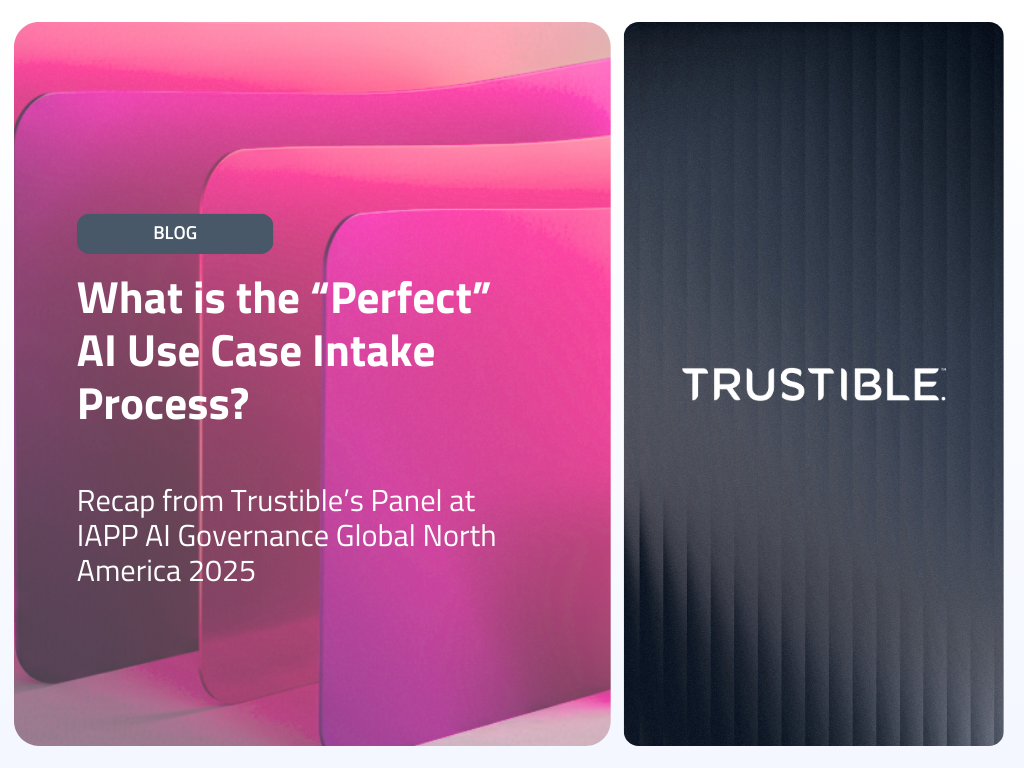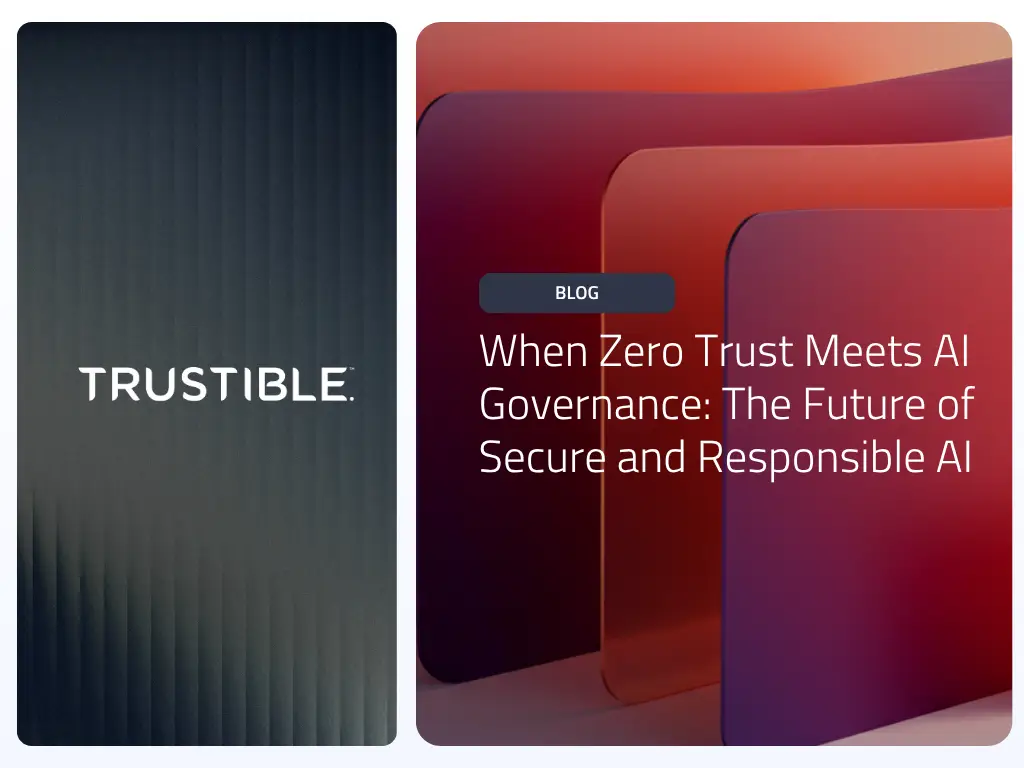Recap from Trustible’s Panel at IAPP AI Governance Global North America 2025
Last week at the IAPP AI Governance Global North America conference in Boston, Trustible brought together AI governance leaders from Leidos and Nuix to explore a deceptively tactical but mission-critical question: What does the “perfect” AI intake process look like?
The lively session, moderated by Andrew Gamino-Cheong (CTO & Co-Founder of Trustible), unpacked the front door to AI governance—how organizations capture and review every AI use case, tool, or feature under consideration. Without a reliable intake process, organizations risk missing critical visibility into their AI landscape, undermining governance before it even begins.
But the plot twist? There’s no such thing as the perfect AI intake process—the only perfect process is the one that works best for the nuances and unique needs of your organization.
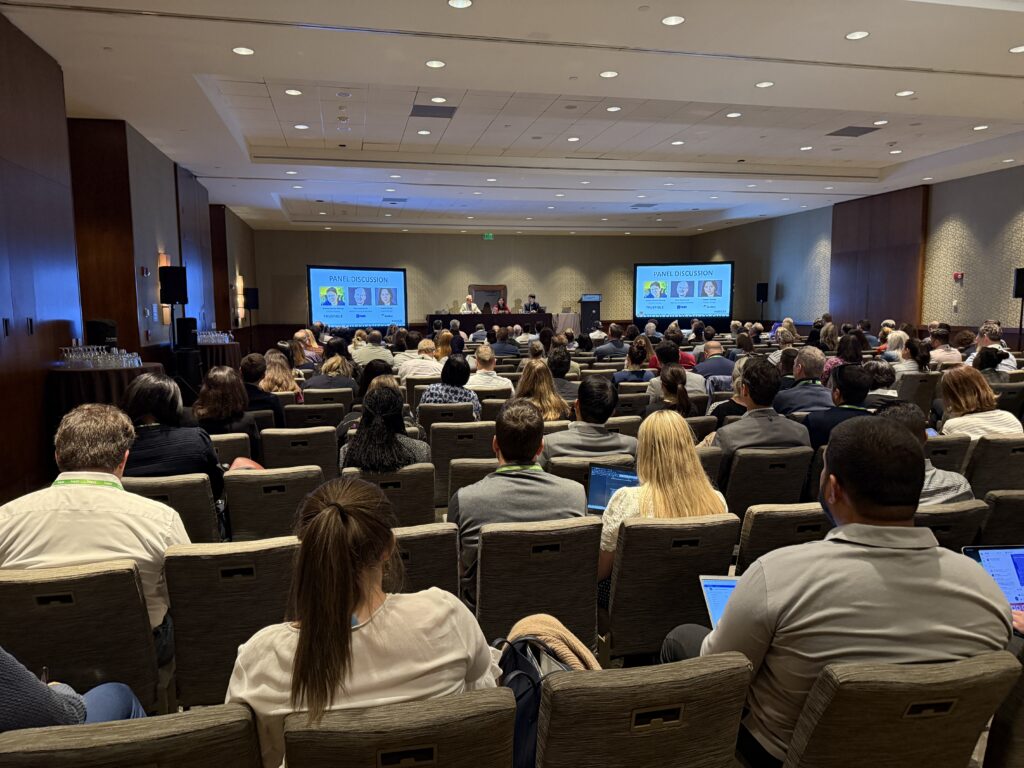
Setting the Stage: Why Intake Matters
Gamino-Cheong opened by laying out the six tradeoffs that define intake design:
- Granularity: What exactly are you governing—tools, features, or use cases?
- Heaviness: Is your process light-touch or burdensome?
- Outcomes: Does intake produce a yes/no decision, mitigations, or a routing step?
- Participation: Who fills it out, and who reviews it?
- Implementation: Is it a spreadsheet, workflow tool, or governance platform?
- Timeliness: Is it triggered at ideation or just before deployment?
“There’s no ‘perfect’ intake process,” Gamino-Cheong emphasized. “Only the one that’s right-sized for your organization’s size, role, and risk profile.”
Practitioner Journeys: From Messy Starts to Scalable Systems
Sophia Toomey, Program Manager, Leidos
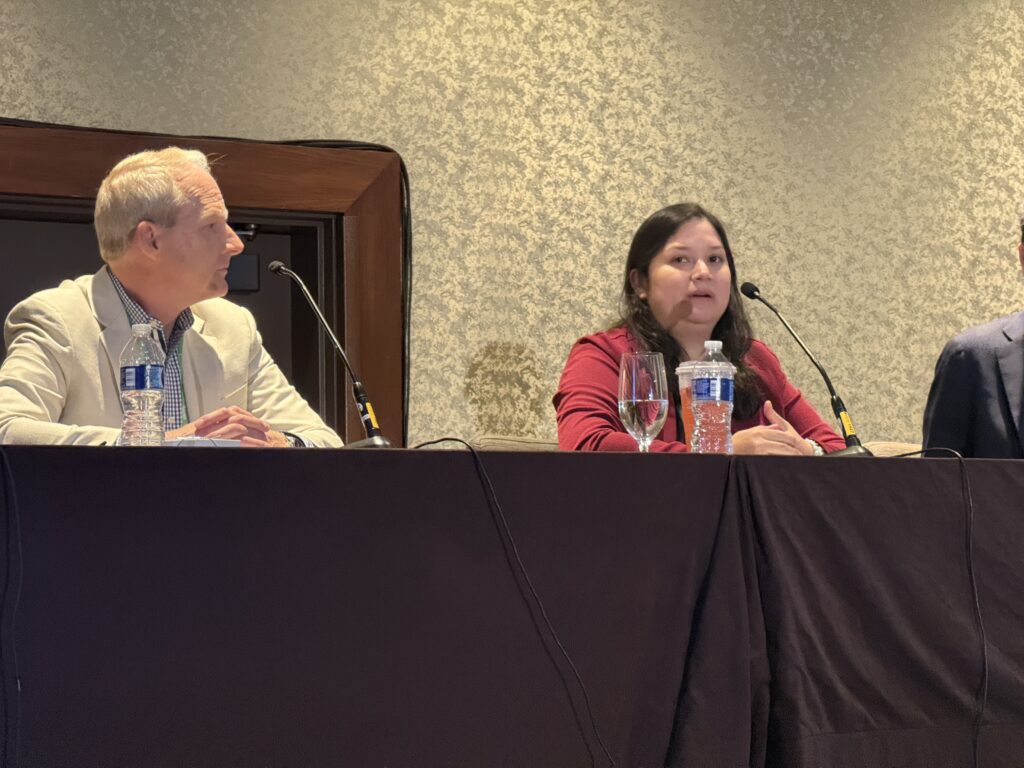
With over 50,000 employees, Leidos faced an avalanche of AI tools and pilots. Toomey candidly described starting with messy spreadsheets and PowerPoints before moving toward a company-wide intake process. Her key lessons: simplify questions, meet contributors where they are, and position governance as risk reduction—not auditing.
“Give yourself grace if you’re still in Excel and PowerPoint,” she advised. “It’s trial and error—you’ll grow from there.”
Chris Stevenson, Head of AI Strategy & Operations, Nuix
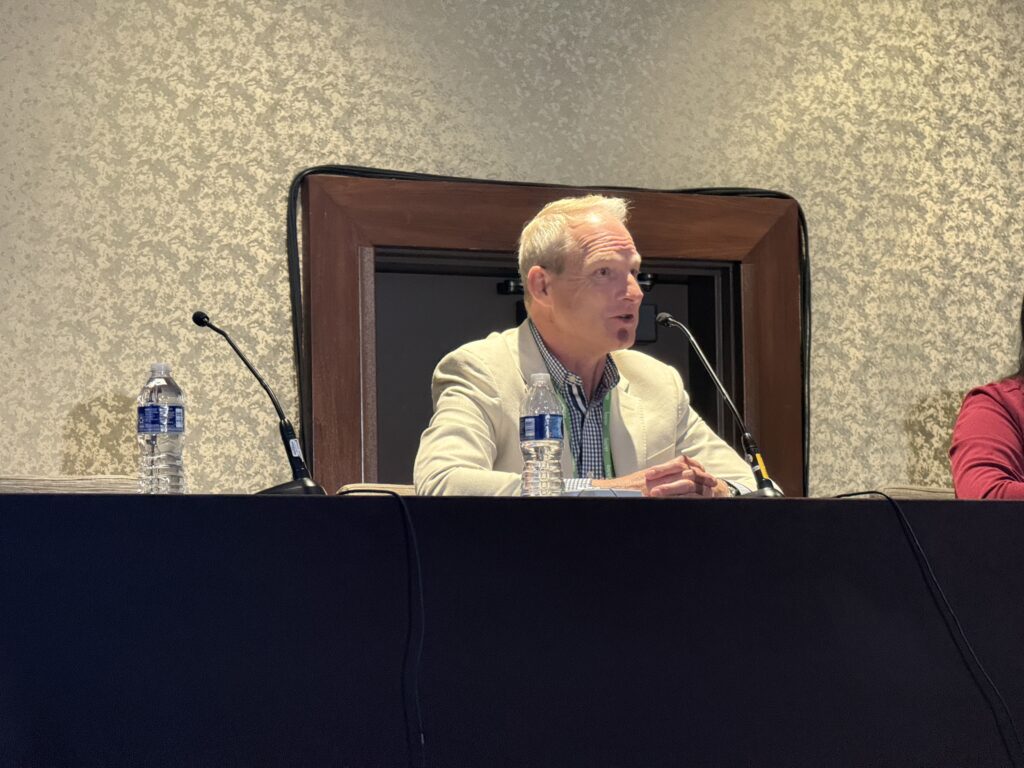
At Nuix, Stevenson admitted he wasn’t “a process person” by nature. But the stakes—supporting regulators and investigators—demanded rigor. His first attempts with shared Word docs collapsed under the pace of AI adoption. The breakthrough came by partnering early with legal and privacy leaders, and later, by automating consistency through Trustible’s platform.
“AI governance demanded it. Partnering with legal was the game-changer,” he said.
Common Pitfalls and Culture Shifts
Both panelists stressed that intake is as much about culture as policy:
- Education & Buy-In: Stevenson described mandatory HR-led AI training and even company hackathons. “AI is a cultural shift as much as a technological shift. HR became our secret weapon.”
- Cross-Functional Teams: Toomey highlighted the importance of pulling in legal, ethics, IT, HR, and security early to avoid fragmented decision-making.
- Reframing Governance: “Employees first saw us as auditors saying no,” Toomey said. “We reframed it as risk reduction, not blocking innovation.”
Key Takeaways for Organizations
The panel distilled several practical insights:
- No perfect intake: It’s about fit for your org’s scale, risk, and role.
- Start messy, iterate fast: Don’t wait for perfection—trial-and-error builds muscle.
- Cross-functional collaboration: Intake is stronger when legal, privacy, security, and product are at the table.
- Culture change is essential: Governance succeeds when employees see it as enabling, not obstructing.
- Scalability requires tools: Spreadsheets may work early, but automation is critical for sustainability.
- Risk triage matters: Intake should flag high-risk use cases for deeper governance review.
Or as Stevenson warned: “Don’t underestimate how fast AI will creep in and overwhelm ad hoc systems.”
How Trustible Fits In
Trustible’s mission is to make AI governance practical, scalable, and embedded into everyday workflows. Intake is where it all begins. By partnering with organizations like Nuix and Leidos, Trustible helps turn messy spreadsheets into structured, automated, and trackable systems that align with regulation while keeping innovation flowing.
As Gamino-Cheong summed it up: “The intake process is the front door to AI governance.” At Trustible, we’re building that front door, and ensuring it stays open, usable, and effective for organizations that have the most to win and most to lose with AI.
Interested in rethinking your AI intake process? Get in touch with our team to learn how Trustible can help you right-size governance for your organization.

